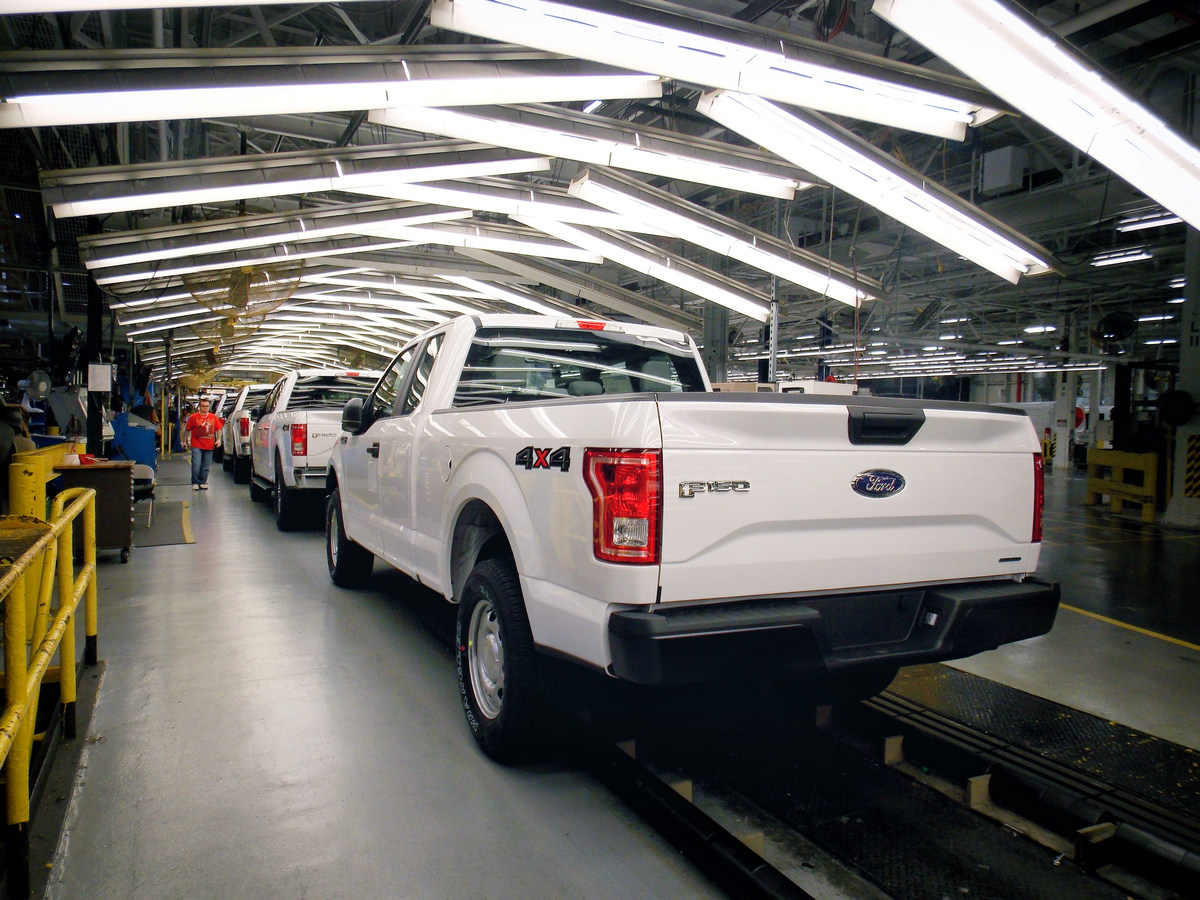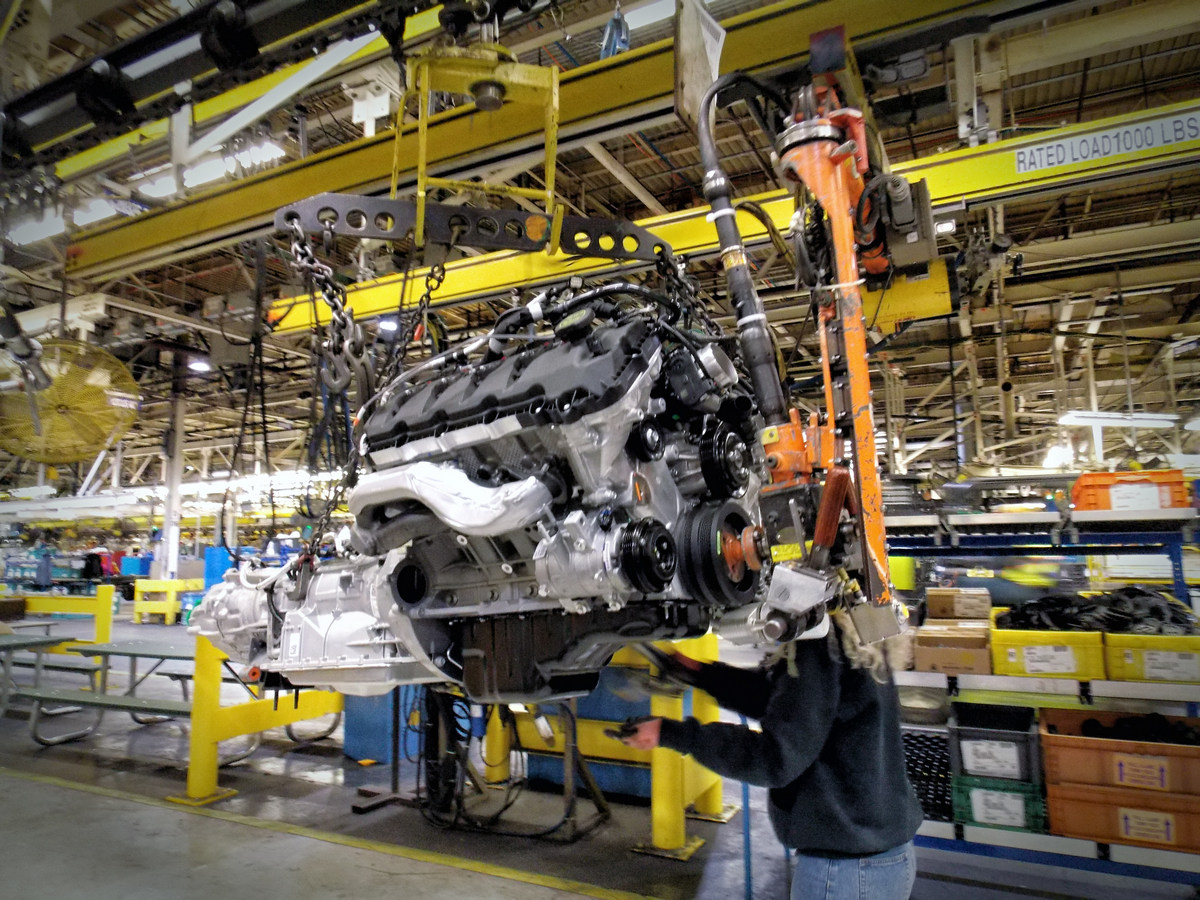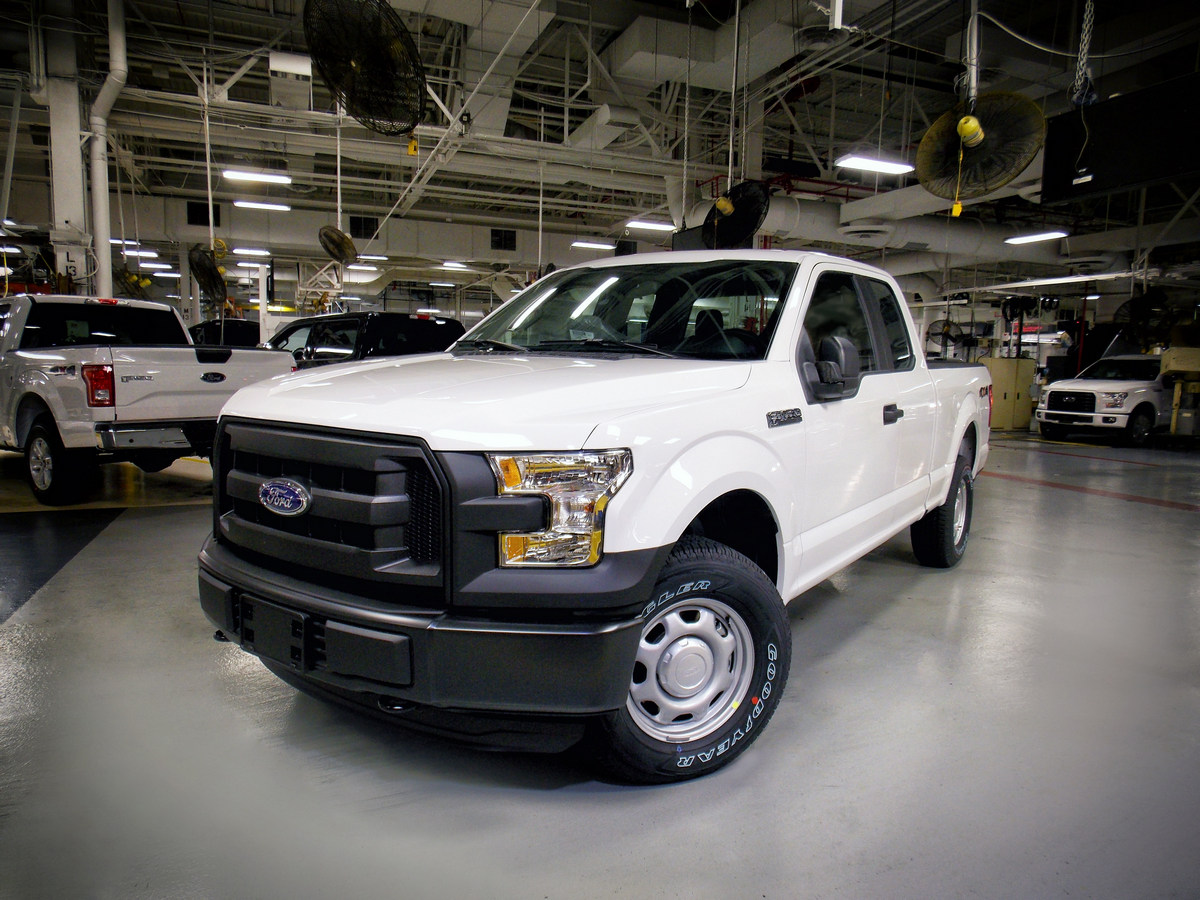The first 2016 Ford F-150 with the ability to run on clean-burning compressed natural gas has rolled off the assembly line, making Ford – America’s truck leader – the only manufacturer to offer a CNG/propane-capable half-ton pickup.
The 2016 Ford F-150 with 5.0-liter Ti-VCT V8 engine is available with a factory-installed, gaseous-fuel prep package that includes hardened valves, valve seats, pistons and piston rings so it can operate on natural gas, propane or gasoline through separate fuel systems.

The 2016 Ford F-150 with 5.0-liter Ti-VCT V8 engine offering gaseous-fuel prep option is rolling off the line at Kansas City Assembly Plant, making it the only light-duty pickup capable of running on compressed natural gas (CNG) or propane © Ford Motor Company
“It’s exciting to see the first F-150s with the CNG/propane-prepped 5.0-liter V8 headed to customers,” said Jon Coleman, Ford fleet sustainability and technology manager. “Whether running on gasoline, gaseous fuel or both, the 5.0-liter V8 F-150 offers hardworking customers terrific towing and payload and now, the ability to operate on alternative fuel.”
When equipped with a bi-fuel CNG/propane engine package, the 5.0-liter V8 F-150 is capable of achieving more than 750 miles on combined tanks of gasoline and CNG, depending on tank size. The Ford F-150 with 5.0-liter V8 has an EPA-estimated rating of 22 mpg on the highway and 18 mpg combined.

The 2016 Ford F-150 with 5.0-liter Ti-VCT V8 engine offering gaseous-fuel prep option is rolling off the line at Kansas City Assembly Plant, making it the only light-duty pickup capable of running on compressed natural gas (CNG) or propane © Ford Motor Company © Ford Motor Company
Green Car Journal recently named the 2016 F-150 its 2016 Green Truck of the Year, in part due to the availability of the gaseous-fuel prep option.
CNG/LPG engine prep from the factory costs $315 before the customer chooses a Ford Qualified Vehicle Modifier to supply fuel tanks, fuel lines and unique fuel injectors. Upfits run approximately $6,000 to $9,500, depending on fuel tank capacity.
Ford offers broadest portfolio of CNG/propane-capable vehicles
With production of the 2016 F-150 now under way, Ford Motor Company offers eight factory-available vehicles with a gaseous-fuel prep option – more than any other North American automaker. In addition to F-150 with 5.0-liter Ti-VCT V8, these include:
- F-250 and F-350 Super Duty pickup with 6.2-liter V8
- F-350 to F-550 Super Duty chassis cab with 6.2-liter V8 or 6.8-liter V10
- F-650 and F-750 chassis cab with 6.8-liter V10
- F-53 and F-59 stripped chassis with 6.8-liter V10
- Transit Connect van and wagon with 2.5-liter I-4
- Transit van, wagon, cutaway and chassis cab with 3.7-liter Ti-VCT V6
- E-Series cutaway and stripped chassis with 6.8-liter V10
Benefits of compressed natural gas and propane
Compressed natural gas is mainly comprised of methane. It is stored and distributed in hard containers at a pressure of around 3,600 psi. Approximately 85 percent of the CNG used in the United States is produced domestically.
Another benefit of this alternative fuel is cleaner emissions. A vehicle operating on CNG can reduce tailpipe CO2 emissions by approximately 20 percent compared with the same vehicle running on gasoline.
Propane autogas, also known as liquefied petroleum gas, is a mixture of hydrocarbon gases, most commonly propane and butane. Approximately 90 percent of the United States’ propane supply is produced domestically







































